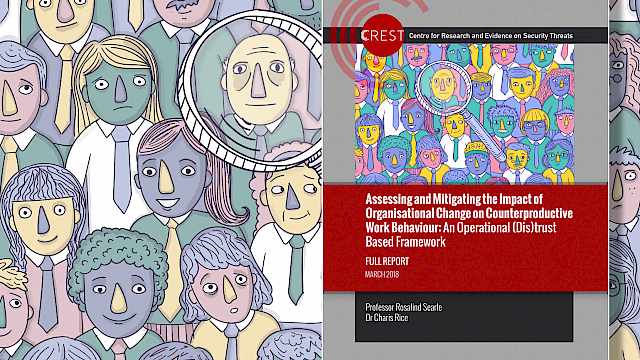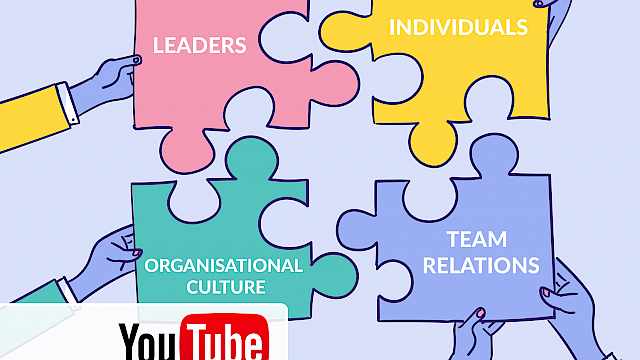Rosalind Searle
Rosalind Searle holds a Chair in HRM and Organizational Psychology at the University of Glasgow.
She held a chair in Organisational Behaviour and Psychology at Coventry University, where she was co-founder of the Centre for Trust, Peace and Social Relations. She is a Chartered Occupational Psycholgist and has held academic positions at Aston University and the Open University.
Her research focuses on organisational trust with a particularly focus on employee trust and the role of HRM. She is interested in how experiences of HR systems impact on the trust and distrust of staff.
She regularly presents and leads in both academic and non-academic contexts including national and international conferences, invited and public lectures, such as the Chartered Institute for Personnel and Development (CIPD) and the Professional Standards Authority.
Her research has appeared in leading international journals (e.g. HRM, International Journal of HRM, and Long Range Planning). She has held visiting positions at City University, and Singapore Management University. She is co-editor for the forthcoming Routledge Companion to Trust, and editor for the Routledge Trust book series.
She serves on the editorial boards of Journal of Management, Journal of Trust Research, and International Perspectives in Psychology: Research, Practice, Consultation (IPP).
CREST Outputs
Projects
Articles
Academic Publications
The Enabling Role of Internal Organizational Communication in Insider Threat Activity – Evidence From a High Security Organization
This paper explores the role of internal communication in one under-researched form of organizational crisis, insider threat – threat to an organization, its people or resources, from those who have legitimate access. In this case study, we examine a high security organization, drawing from in-depth interviews with management and employees concerning the organizational context and a real-life incident of insider threat. We identify the importance of three communication flows (top-down, bottom-up, and lateral) in explaining, and in this case, enabling, insider threat. Derived from this analysis, we draw implications for communication and security scholars, as well as practitioners, concerning: the impact of unintentional communication, the consequences of selective silence and the divergence in levels of shared understanding of security among different groups within an organization.
(From the journal abstract)
Rice, C., & Searle, R. H. (2022). ‘The Enabling Role of Internal Organizational Communication in Insider Threat Activity – Evidence From a High Security Organization.’ Management Communication Quarterly.
https://doi.org/10.1177%2F08933189211062250Trust, and high control: an exploratory study of Counterproductive Work Behaviour in a high security organization
From journal abstract:
High security organizations utilize a fine balance between control and trust to maintain stability. Drawing on qualitative interviews with managers and employees concerning three Counterproductive Work Behaviour (CWB) incidents occurring within a “high control” organization, we explore the impact of this trust-control dynamic on individuals’ sensemaking, social relations and workplace behaviours. We explore Human Resource Management (HRM) control practices, contrasting levels of control (over and under-control), form (formal and informal), and consistency of control management, that variously destabilize the balance of trust and control. Framed by this dynamic, employees undertake CWB as a means of maintaining their trusting relationships, professional goals and well-being in an unpredictable workplace. We demonstrate the value of understanding the trust-control dynamic for CWB and identify potential lessons for prevention.
Searle, R. H. & Rice, C. (2024) Trust, and high control: an exploratory study of Counterproductive Work Behaviour in a high security organization, European Journal of Work and Organizational Psychology, DOI: 10.1080/1359432X.2024.2344870
https://www.tandfonline.com/doi/pdf/10.1080/1359432X.2024.2344870
Projects
Articles
Academic Publications
The Enabling Role of Internal Organizational Communication in Insider Threat Activity – Evidence From a High Security Organization
This paper explores the role of internal communication in one under-researched form of organizational crisis, insider threat – threat to an organization, its people or resources, from those who have legitimate access. In this case study, we examine a high security organization, drawing from in-depth interviews with management and employees concerning the organizational context and a real-life incident of insider threat. We identify the importance of three communication flows (top-down, bottom-up, and lateral) in explaining, and in this case, enabling, insider threat. Derived from this analysis, we draw implications for communication and security scholars, as well as practitioners, concerning: the impact of unintentional communication, the consequences of selective silence and the divergence in levels of shared understanding of security among different groups within an organization.
(From the journal abstract)
Rice, C., & Searle, R. H. (2022). ‘The Enabling Role of Internal Organizational Communication in Insider Threat Activity – Evidence From a High Security Organization.’ Management Communication Quarterly.
Trust, and high control: an exploratory study of Counterproductive Work Behaviour in a high security organization
From journal abstract:
High security organizations utilize a fine balance between control and trust to maintain stability. Drawing on qualitative interviews with managers and employees concerning three Counterproductive Work Behaviour (CWB) incidents occurring within a “high control” organization, we explore the impact of this trust-control dynamic on individuals’ sensemaking, social relations and workplace behaviours. We explore Human Resource Management (HRM) control practices, contrasting levels of control (over and under-control), form (formal and informal), and consistency of control management, that variously destabilize the balance of trust and control. Framed by this dynamic, employees undertake CWB as a means of maintaining their trusting relationships, professional goals and well-being in an unpredictable workplace. We demonstrate the value of understanding the trust-control dynamic for CWB and identify potential lessons for prevention.
Searle, R. H. & Rice, C. (2024) Trust, and high control: an exploratory study of Counterproductive Work Behaviour in a high security organization, European Journal of Work and Organizational Psychology, DOI: 10.1080/1359432X.2024.2344870















